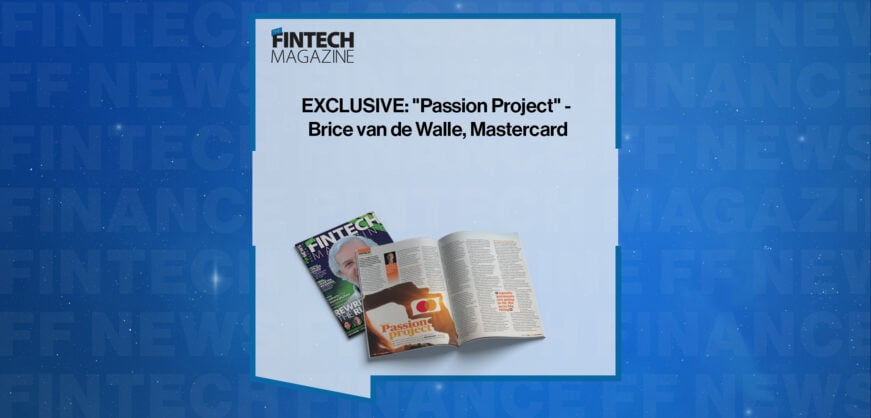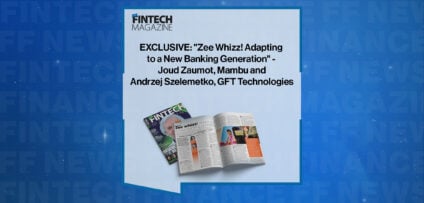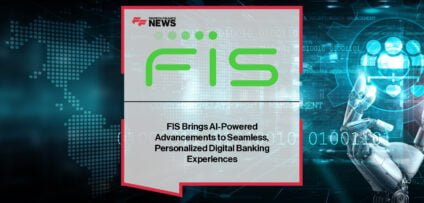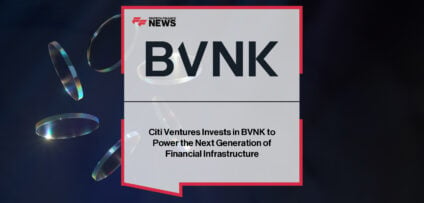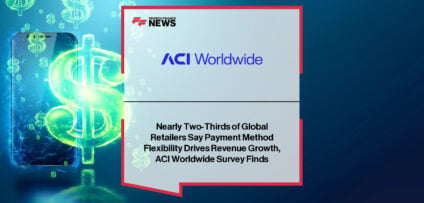Breaking News

EXCLUSIVE: “AI see the future” – Roque Martinez, SmartStream in ‘The Fintech Magazine’
SmartStream CTO Roque Martinez reveals how the company’s significant investment in AI is taking it into new and surprising markets
When SmartStream unveiled its Cloud-native, AI-driven software-as-a-service SmartStream AIR at Sibos in London in 2019, most of us hadn’t even heard of ChatGPT or had the vaguest idea what generative AI and large language models were all about. OpenAI’s Generative Pre-Trained Transformer #1 had only been knocking about for a year at that point and wasn’t the head turner that it’s younger sibling #4 would turn out to be. Which is to say that things change mighty fast in the world of artificial intelligence – not just in terms of the technology’s capability, but in what it’s applied to.
SmartStream, a company that for decades had largely been focussed on automating reconciliations in trade processing, is testament to that. Back in 2019, its management clearly understood that the AI being developed by its in-house team of specially recruited data scientists in its AI lab in Vienna, was the key to unlocking a whole new era – or should that be AIR-er – for the company. In 2020, it rebranded, adopting an infinity symbol as its logo.Now, it’s becoming apparent just how impactful AI could be – for both
SmartStream and the expanding number of markets it’s opened the door on. AIR (artificially intelligent reconciliations) was just the start.
SO, WHAT DOES IT DO?
For Roque Martinez, the company’s CTO, AIR’s basic (which is not to say simple) task is to remove friction in a financial institution’s middle and back office processes.
“That, after all, is why AI, machine learning and robotic process automation, which all fall into this realm, have taken off – because organisations are looking to remove that friction,“ he says.“In reconciliations, you want to take two files, onboard them quickly, have them reconcile and then whatever exceptions come out, you deal with them.
“With SmartStream AIR the point is that you don’t spend hours, days, months trying to build rules to reconcile those data sets. That’s what the product does. It says, ’we know what these things look like,’ reconciles the records and moves them on. There’s a significant reduction in friction because people aren’t doing it, machines are.
“It’s AI’s ability to spot patterns in real-time in data that are simply too large and complex for the human brain to handle, that SmartStream is now looking to leverage for other outputs.
“One of the models that we’ve been talking about especially is around cash and liquidity management,” says Martinez.
It’s a timely thought, given the domino collapse of Silicon Valley Bank, Signature Bank and First Republic in the US. There are accepted ways of measuring if a bank is healthy or not, some introduced after the great financial crisis to avoid a repeat of the failures seen then. The three liquidity indicators used by regulators and analysts are usually liquidity ratio (LiqR), liquidity creation (LiqC) and net stable funding difference (NSFD). If observers keep an eye on those, they should get a heads up on any bank in distress.
But, as recent events proved, that’s not always soon enough – and, for regular counterparties whose job isn’t to watch the numbers and are just sending or receiving funds from a bank that’s in freefall, there are sometimes no signs, other than word of mouth or Twitter jitters – which is why many were caught out when SVB came off the rails.
“In my opinion, AI is not going to be finding better algorithms. We’re there already. But, similar to what we’re seeing with ChatGPT, it is going to start processing data in a way that allows new securities and products to be put togetherreference”
As Martinez explains: “If someone starts funding every day, let’s say it’s 12 o’clock that they make their payments, and then it slips to 12.15, then 12.30, one o’clock… is there something in those events that is saying ‘this counterparty is starting to have some liquidity issues and maybe they should be shut off?’.
“Instead of a human saying, ’I just got a call from risk to tell us to stop making those payments’, is there something that could flash red on the screen that says, ’wait, don’t do anything’?”
Another model SmartStream is examining is more general in nature – the objective being to provide as much clean reference data for the markets as possible so that their own engines can produce better quality algorithms.
“If what goes in is garbage, that’s what comes out. If you have a lot of breaks because your identifiers aren’t correct, you need to get a provider, such as us, to give you clean data and ensure your algorithms work properly,“ says Martinez.
“SmartStream uses the three Vs. Data has to be verified, so it has to be data that we know is trusted from an organisation. There has to be value to that data – it has to be something that we know will help us get somewhere. And, finally, there has to be volume – it just can’t be one record, there have to be several records.”
It’s also starting to explore AI applications around its fees and expense management product.
“One is to use it to understand and read the documents that customers sign off on, so they can extract all of those fees for doing the trades,” says Martinez. “We can onboard these schedules much faster, and then get those savings to our customers, which then goes to their customers; if they’re paying less in fees, because they’re doing more transactions with a certain broker, both sides are getting the benefit.”
An entirely new area of work for SmartStream AIR itself could be in natural language processing for text reconciliation when compiling sanctions lists to reduce the likelihood, for example, of an individual or institution finding themselves on a list because a single letter has erroneously been mis-entered. It’s what Martinez refers to as ‘fuzzy matching’
“While we were working internally, with AIR, and some of its offshoot projects, internally, we realised that text is a big topic of reconciliation,” says Martinez. “The point is, we can use that technology not just for numbers, but also for text. We can do anti-money laundering, know your customer. When someone gives you a name to match against a sanctions list, you can ask the AI ‘is this person on any of these lists that we are aware of?’ and it will return ‘here are possibilities’. Before, without that technology, it had to match or it didn’t. Now, it doesn’t have to match; it can just sound the same, because the AI will conduct phonetic searches as well as text searches. We have a bank in Asia, that we’re testing this with now.”
Looking ahead, Martinez predicts large language models and generative AI like ChatGPT will impact some areas of the financial services industry in a fundamental way.
“In my opinion, artificial intelligence is not going to be finding better algorithms. We’re there already. But, similar to what we’re seeing with ChatGPT, the way AI is going to start changing finance is by processing data in a way that allows new securities and products to be put together. With technologies like GPT, you could say, ‘I’d like to have some kind of interest-type product‘, and the technology will say, ’here are the 10 ways you can do something like that’. That’s what this new technology is doing: using neural networks to make attachments to things that a human may not have thought of because we’ve never been able to put those neurons together.
This article was published in The Fintech Magazine Issue 28, Page 66-67
People In This Post
Companies In This Post
- EXCLUSIVE: “Passion Project” – Brice van de Walle, Mastercard in ‘The Fintech Magazine’ Read more
- FreedomPay Drives Global Merchant Innovation Read more
- FIS Brings AI-Powered Advancements to Seamless, Personalized Digital Banking Experiences Read more
- Citi Ventures Invests in BVNK to Power the Next Generation of Financial Infrastructure Read more
- Nearly Two-Thirds of Global Retailers Say Payment Method Flexibility Drives Revenue Growth, ACI Worldwide Survey Finds Read more





